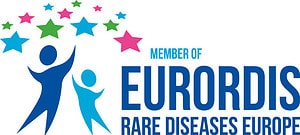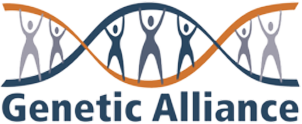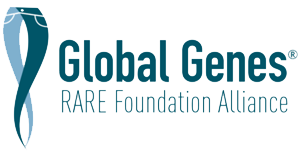General Info
Overview
Leigh syndrome is a rare mitochondrial condition where the body is not able to use oxygen to change energy from food into a form of energy it can use the way that it should. Mitochondria are parts of a cell that help turn the energy we get from food into energy that the body can use. They are also important in the communication between body parts and creating other materials the body needs. Mitochondrial conditions can cause a variety of signs and symptoms in many parts of the body, particularly those that use a lot of energy like muscles and the brain.
Alternative Names
- classical Leigh syndrome
- Leigh necrotizing encephalopathy
- Leigh’s disease,
- necrotizing encephalomyelopathy of Leigh’s
- SNE
- subacute necrotizing encephalopathy
Genetics
Affected Genes
Over 75 genes are known to cause Leigh syndrome
Inheritance Type(s)
- Autosomal dominant
- Autosomal recessive
- Mitochondrial
Cause and Genetics
Leigh syndrome is a genetic condition, meaning it is passed down or inherited in a family. Leigh syndrome can be caused by changes in over 75 different genes. 80% of the time, the genetic change is in the nuclear DNA, or set of DNA present in every cell of the body and inherited from both parents. Leigh syndrome can also be caused by changes in the mitochondrial genome (mtDNA) or set of DNA contained in the mitochondria of a cell. Both males and females can inherit Leigh syndrome.
Frequency
Frequency (Global)
1:40,000
Frequency - More Information
Leigh syndrome is more common in some populations like the Saguenay Lac-Saint-Jean region of Quebec, Canada or the Faroe Islands, a self-governing part of the Kingdom of Denmark.
Affected Biological Gender
Male
Signs and Symptoms
The signs and symptoms of Leigh syndrome are related to degeneration of the central nervous system including the brain, spinal cord and optic nerve, which is the nerve that talks to the eyes. Symptoms typically appear when an individual is born but can also present later in childhood. The exact features, onset, and severity can vary widely among people with this condition, even among members of the same family. Always check with your provider if new symptoms appear or you are concerned.
Signs and symptoms may include:
- Delay in meeting typical developmental milestones
- Loss of thought and motor skills (psychomotor regression)
- Loss of appetite and trouble gaining/keeping weight or growing (failure to thrive)
- Muscle weakness and low muscle tone (hypotonia)
- Loss Of movement control and balance (dystonia and ataxia)
- Tremors
- Muscle spasms (spasticity)
- Loss of sensation (peripheral neuropathy)
- Vomiting
- Irritability
- Continual crying
- Seizures
- Episodes of high lactate in the blood called lactic acidosis
- Episodes of high carbon dioxide in the blood called hypercapnia
- Respiratory problems including episodes where the child will stop breathing (apnea), difficulty breathing (dyspnea), breathing that is faster than normal (hyperventilation), or different breathing patterns (Chene-Stokes)
- Trouble swallowing called dysphagia
- Eye problems including quick eye movements (nystagmus), crossed eyes (strabismus), problems moving the eye (ophthalmoplegia), breakdown of the nerves of the eyes (optic atrophy), and sight impairment which can lead to blindness
- Structural heart differences such as hypertrophic cardiomyopathy or asymmetric septal hypertrophy
Diagnosis
Leigh syndrome can be diagnosed by:
- Measuring biochemical markers in blood and cerebrospinal fluid – the fluid surrounding the brain and spinal cord
- Brain studies and imaging (brain MRI, CT scan or tomography)
- Careful neurological examination
- Eye examination
- Performing a genetic test
Newborn Screening: Recommended Uniform Screening Panel (RUSP)
No
Newborn Screening - More Information
Treatment
Treatment and Management
As of 2022, there is currently no FDA-approved therapy for Leigh syndrome. Treatment and management of Leigh syndrome is symptomatic and supportive and may include:
- Traditional treatment of heart conditions
- Traditional treatment of seizures
- Medications for movement disorders
- Nutrition support
- Physical and occupational therapy
- Avoidance of mitochondrial toxins like certain drugs, tobacco and alcohol
- Mitochondrial supplements like thiamine (vitamin B1)
Type of Specialists and Clinicians
- Cardiology
- Neurology
- Ophthalmology
- Physical and occupational therapy
Clinical Trials
For specific details on clinical trials visit the MitoAction Clinical Trial page or www.clinicaltrials.gov.
Resources
- Leigh syndrome – About the Disease – The National Institutes of Health
- Leigh Syndrome – National Organization for Rare Disorders)
- About Leigh Syndrome – People Against Leigh Syndrome
Connecting with others impacted by a rare disease allows for vital information to be shared about day-to-day life, prevents isolation, and gives hope. Please contact MitoAction for peer support opportunities at 888-MITO-411 or email mito411@mitoaction.org.
Other resources we recommend are:
- New Patient Kit for Mitochondrial Conditions
- Planning for Emergencies
- Monthly Expert Series
- Energy in Action Podcast
MitoAction does not provide medical advice, diagnosis, treatment, or legal advice. It is essential that all those living with or caring for someone with a Mitochondrial or FAOD disease have an emergency protocol letter. These letters, which are written and signed by a doctor, share details about prescribed treatment during crises and in emergency room settings. Always check with your doctor if you or your child has concerns as everyone may present with symptoms differently. Before beginning any treatment or therapy, please consult with your physician.
Last Updated: 11/15/2022









